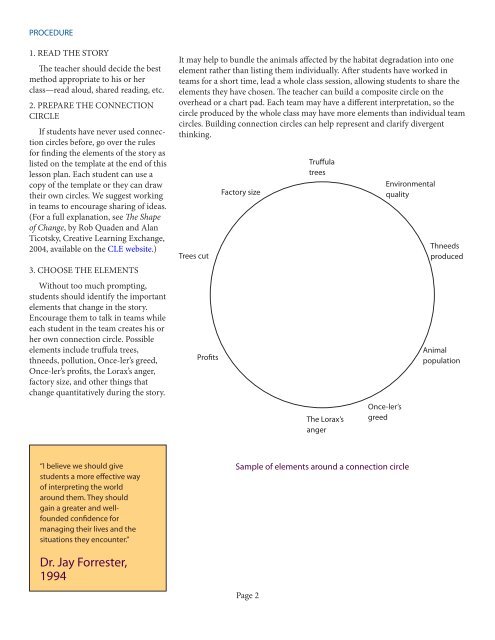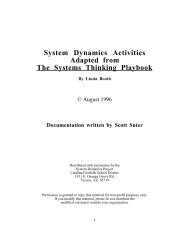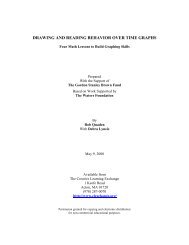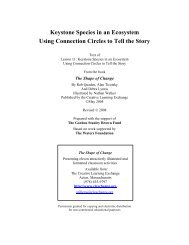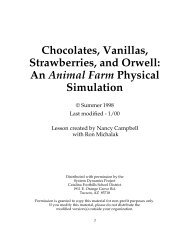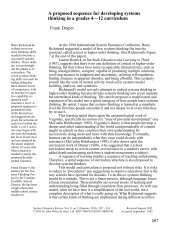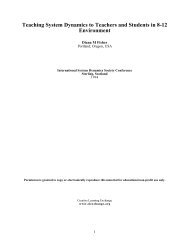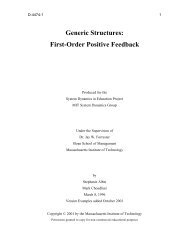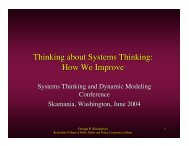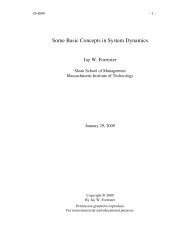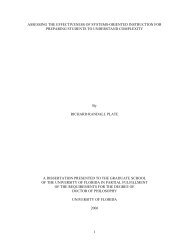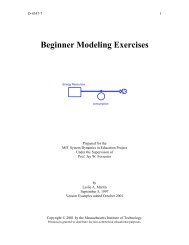studying the lorax with feedback loops - Creative Learning Exchange
studying the lorax with feedback loops - Creative Learning Exchange
studying the lorax with feedback loops - Creative Learning Exchange
You also want an ePaper? Increase the reach of your titles
YUMPU automatically turns print PDFs into web optimized ePapers that Google loves.
PROCEDURE1. READ THE STORYThe teacher should decide <strong>the</strong> bestmethod appropriate to his or herclass—read aloud, shared reading, etc.2. PREPARE THE CONNECTIONCIRCLEIf students have never used connectioncircles before, go over <strong>the</strong> rulesfor finding <strong>the</strong> elements of <strong>the</strong> story aslisted on <strong>the</strong> template at <strong>the</strong> end of thislesson plan. Each student can use acopy of <strong>the</strong> template or <strong>the</strong>y can draw<strong>the</strong>ir own circles. We suggest workingin teams to encourage sharing of ideas.(For a full explanation, see The Shapeof Change, by Rob Quaden and AlanTicotsky, <strong>Creative</strong> <strong>Learning</strong> <strong>Exchange</strong>,2004, available on <strong>the</strong> CLE website.)3. CHOOSE THE ELEMENTSWithout too much prompting,students should identify <strong>the</strong> importantelements that change in <strong>the</strong> story.Encourage <strong>the</strong>m to talk in teams whileeach student in <strong>the</strong> team creates his orher own connection circle. Possibleelements include truffula trees,thneeds, pollution, Once-ler’s greed,Once-ler’s profits, <strong>the</strong> Lorax’s anger,factory size, and o<strong>the</strong>r things thatchange quantitatively during <strong>the</strong> story.It may help to bundle <strong>the</strong> animals affected by <strong>the</strong> habitat degradation into oneelement ra<strong>the</strong>r than listing <strong>the</strong>m individually. After students have worked inteams for a short time, lead a whole class session, allowing students to share <strong>the</strong>elements <strong>the</strong>y have chosen. The teacher can build a composite circle on <strong>the</strong>overhead or a chart pad. Each team may have a different interpretation, so <strong>the</strong>circle produced by <strong>the</strong> whole class may have more elements than individual teamcircles. Building connection circles can help represent and clarify divergentthinking.Trees cutProfitsFactory sizeTruffulatreesThe Lorax’sangerOnce-ler’sgreedEnvironmentalqualityThneedsproducedAnimalpopulation“I believe we should givestudents a more effective wayof interpreting <strong>the</strong> worldaround <strong>the</strong>m. They shouldgain a greater and wellfoundedconfidence formanaging <strong>the</strong>ir lives and <strong>the</strong>situations <strong>the</strong>y encounter.”Sample of elements around a connection circleDr. Jay Forrester,1994Page 2


